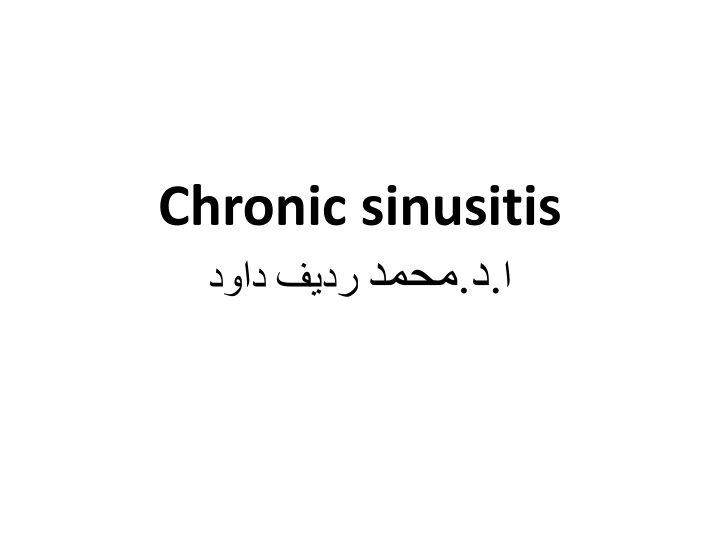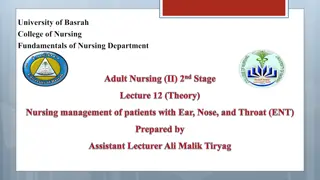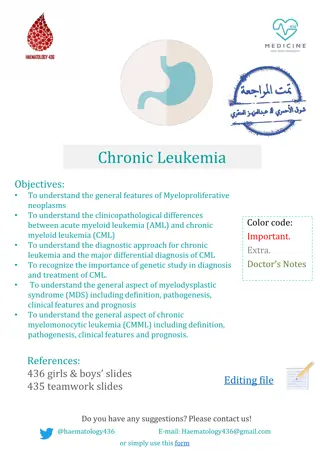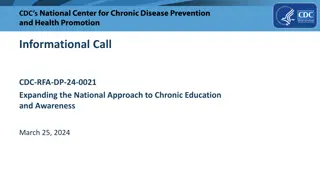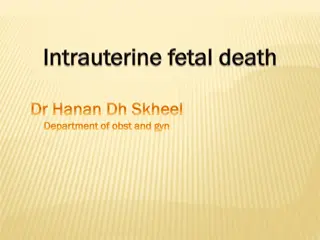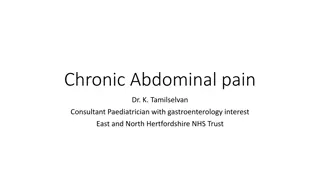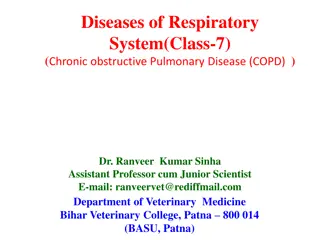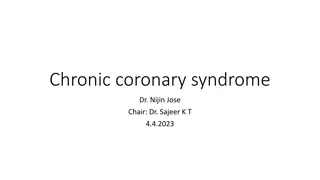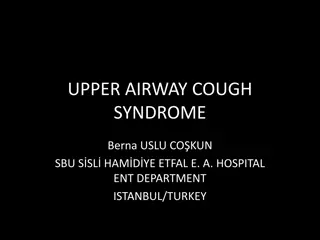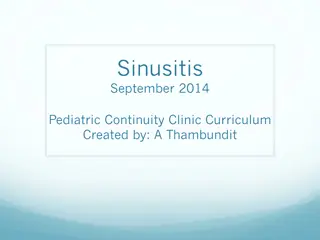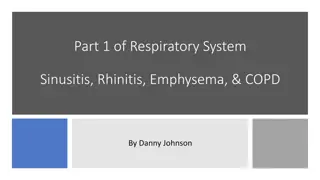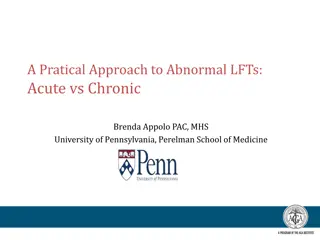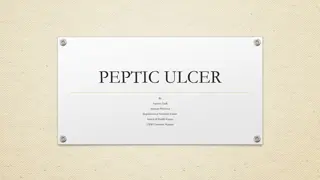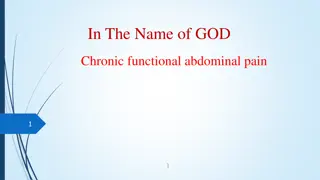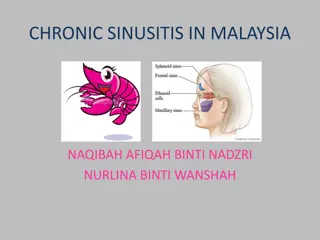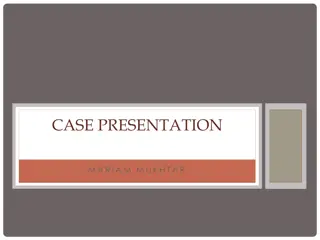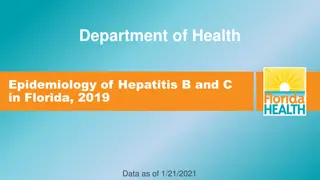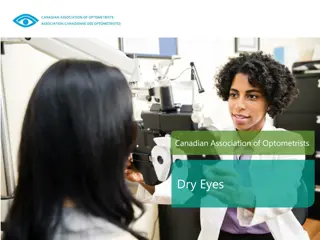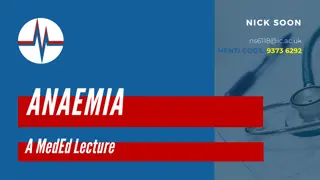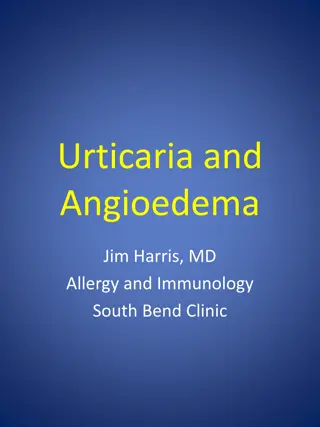Chronic Sinusitis: Causes, Symptoms & Diagnosis
Chronic sinusitis is an inflammation of the mucosal lining of the paranasal sinuses lasting over 3 months. Learn about its classification, pathology, clinical presentation, and investigations like nasal endoscopy and CT scans.
Download Presentation

Please find below an Image/Link to download the presentation.
The content on the website is provided AS IS for your information and personal use only. It may not be sold, licensed, or shared on other websites without obtaining consent from the author.If you encounter any issues during the download, it is possible that the publisher has removed the file from their server.
You are allowed to download the files provided on this website for personal or commercial use, subject to the condition that they are used lawfully. All files are the property of their respective owners.
The content on the website is provided AS IS for your information and personal use only. It may not be sold, licensed, or shared on other websites without obtaining consent from the author.
E N D
Presentation Transcript
Definition It is an inflammation of the mucosal lining of the paranasal sinuses for more than 3 months, recently the term used is chronic rhinosinusitis since the mucosal lining is the same for both the nose and paranasal sinuses.
Classification Specific chronic sinusitis as tuberculosis, syphilis, and fungal infections Non-specific chronic sinusitis
Non-specific which is subdivided into 2 forms: 1) Simple infective sinusitis Usually follow single or repeated attacks of acute sinusitis that's results from infective rhinitis. 2) Mixed infective and non-infective sinusitis: Secondary consequences usually results from obstruction of the sinus ostium that opens to the nasal cavity, such as: Allergic rhinitis. Vasomotor rhinitis. Nasal polyposis. Structural nasal abnormalities as septal deformity. Congenital mucocilliary disorders as primary cilliary dyskinesia Metabolic derangements (aspirin sensitivity).
Pathology There is mucosal edema leading to gross thickening of mucous membrane that lining the affected sinuses with chronic inflammatory cellular infiltration, fibrosis of submucosa, and mucosal polyposis. Usually it caused by mixed micro-organism such as staph aureus, Pseudomonas aeruginosa, streptococci , proteus and E-coli.
Clinical presentation Symptoms Thick, discolored discharge from the nose (Rhinorrhea) Drainage down the back of the throat (postnasal drip) that s lead to chronic pharyngitis with halitosis. Nasal obstruction Headache Rarely there is pain, tenderness. Reduced sense of smell and taste. Constitutional symptoms are usually mild.
Continue on clinical presentation Signs: by anterior rhinoscopy and nasal endoscopy shows usually non-specific finding, such as nasal polyps, septal deviation, signs of allergic rhinitis or vasomotor rhinitis (intrinsic rhinitis), postnasal drip, granular pharyngitis, also halitosis.
investigations 1. Nasal endoscopy a. To evaluate the normal anatomy b. To exclude the presence of anatomic abnormalities as septal deviation c. Looking for pathologies as polyps, turbinate hypertrophy d. To take samples for culture and sensitivity 2. CT scan is the gold standard investigation with the following aims: a. To prove the diagnosis b. Looking for predisposing factors (anatomical variation or pathological findings) c. To address the anatomy (if surgery is decided) d. To exclude the presence of complications (especially orbital and intracranial complications).
Treatment Medical: given for 4-6 weeks, this will include: 1. Antibiotics 2. Steroids nasal spray 3. Antihistamines especially when there is allergy. 4. Analgesic rarely needed.
Continue on treatment Surgical treatment is indicated when there is failure of medical treatment, these are done according to the sinus involved, and these may include: 1. Intranasal antrostomy. 2. Caldwell Luc operation. 3. Internal and external ethmoidectomy. 4. Internal and external fronto ethmoidectomy 5. Sphenoid surgery . 6. Functional endoscopic sinus surgery (FESS). Gold standard operation"
Aims of FESS 1. Remove diseased mucosa, polyps, and widen sinus ostium. 2. Restore sinus ventilation. 3. Restore the normal mucocilliary function.
